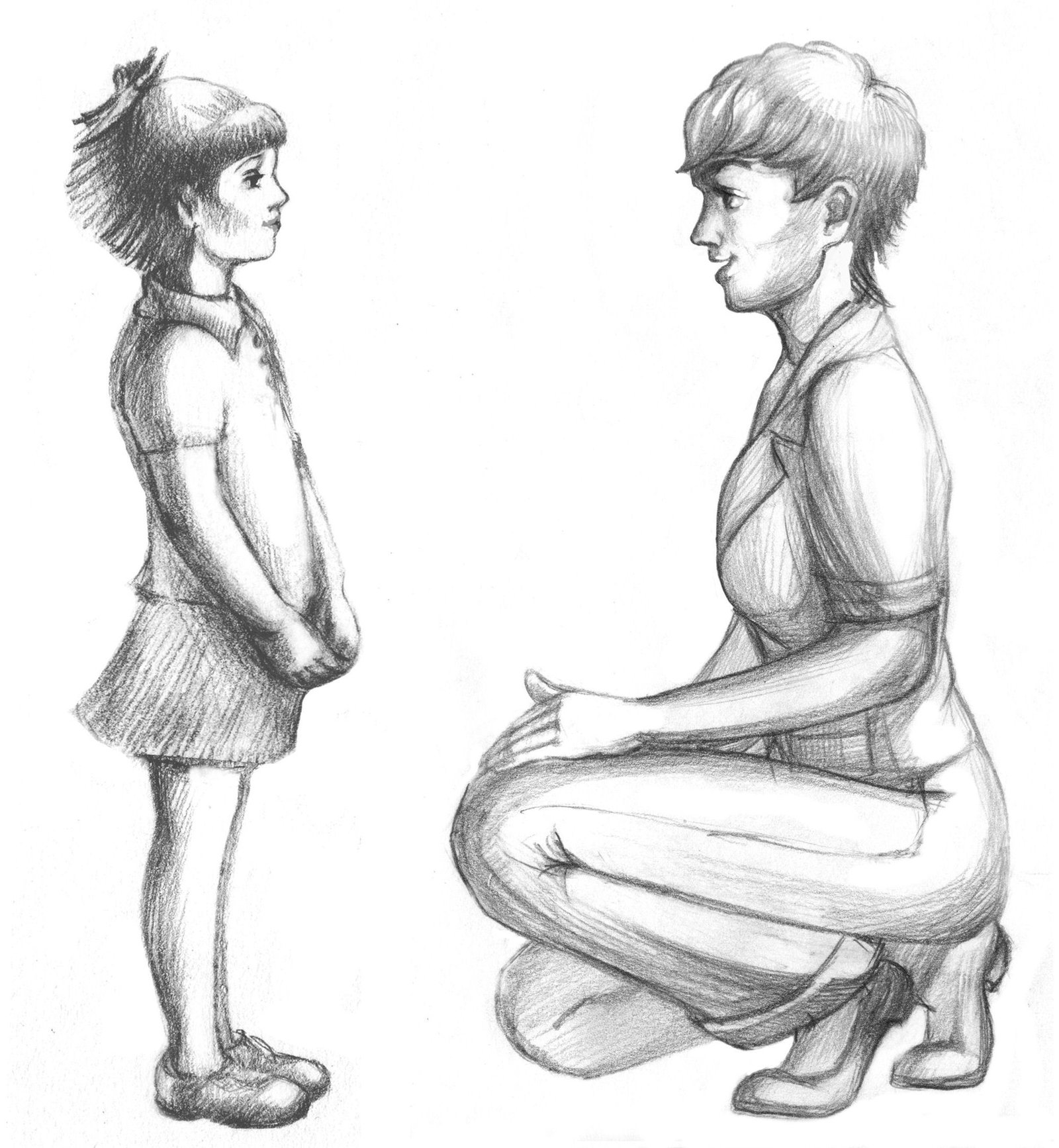In the technology of scientific education, “eye contact” is the most simple, basic technique there is, just looking at a child in the eyes while he is looking back at you in the eyes. All by itself, this technique can be the most perfect way to remove the disorder and detrimental influence of the adult personality on the child. However, it’s great power also comes with a great, if subtle, type of danger in the adult-child relationship as well.
Eye contact, like other techniques, only works for effective scientific teaching within the bounds and regulatory control of specific protocols, such as well-being of the total environment, and least amount of adult involvement. So, for example, don’t establish eye contact with a child if there is a priority for your attention elsewhere in the environment. And don’t prolong eye contact, just because a child continues looking at you.
Too much eye contact can also bring in unconscious forms of manipulation, judgment, dependency attachment, or control, such as when you add a frown, smile, or head gesture showing approval or displeasure. And even when your eye contact is apparently neutral and non-judgmental, lingering too long in your eye contact gaze can create a need and dependency in the adult-child relationship that violates the protocol enhance independence. In such a dependency attachment, the child may initiate a power struggle when his abnormal needs for attention are not met.
For example, prolonged eye contact may provide a sort of unconscious spiritual comfort and need in you that you project on to the child, who may then react in some way to act-out this dependency by disobeying or disregarding your clear direction. Here, the child doesn’t take your action in a serious meaningful manner, due to the close mutual need for dependency and approval you have established with him.
If you find yourself in a such a dependency “eye contact” drama with a child, the solution is to decisively disengage from any eye contact at all with the child for a time, until you have regained a more normal, regulated type of relationship with him. And, in the future, make a conscious effort to disengage eye contact quickly when it no longer serves the real function and purpose of creating and maintaining a “true natural” reality with the child in question.

